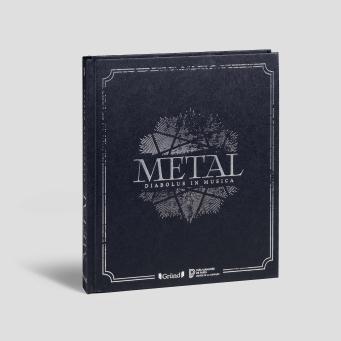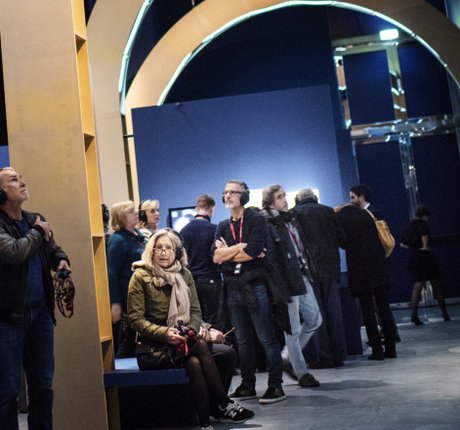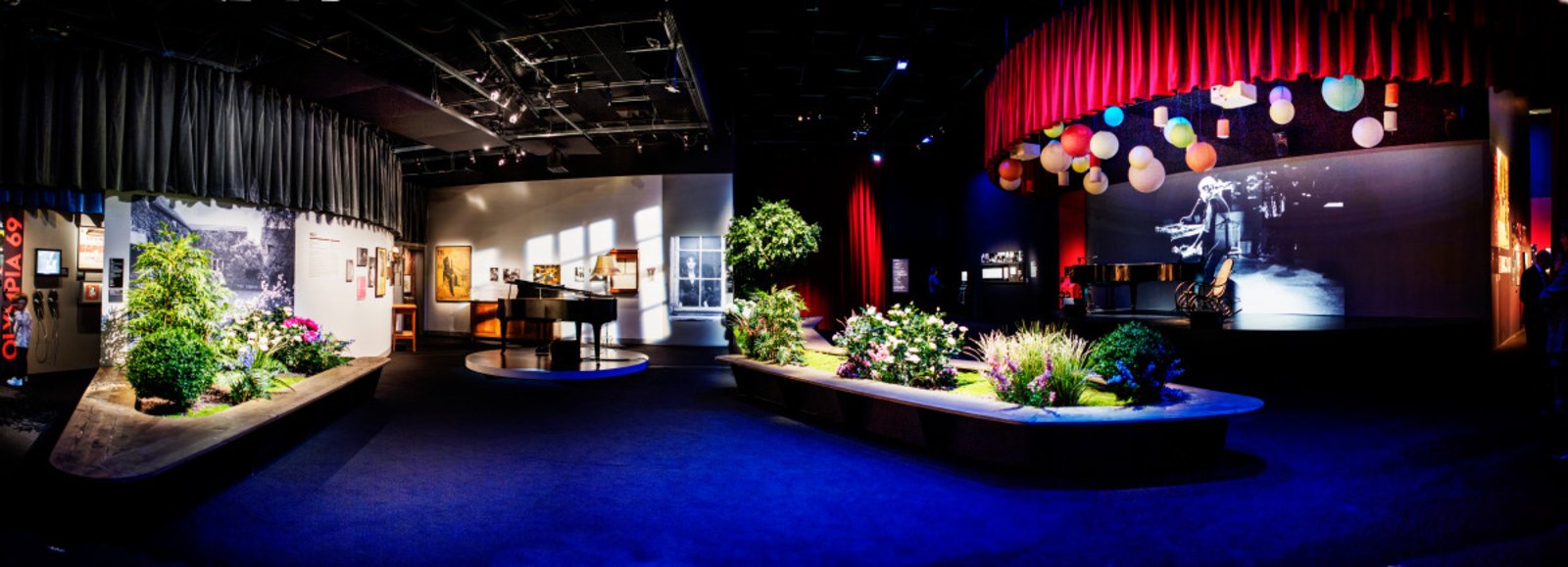Saturation, distortion, voices from beyond the grave, shocking iconography: metal is subversive in both form and content. Since its genesis nearly fifty years ago, the genre has resisted any form of institutionalisation, but its following continues to grow. After electro and hip-hop, the Philharmonie explores this new territory, its codes and the wealth of its myths. Contrary to the caricatures to which metal is often reduced, the exhibition presents, for the first time in France, a documented picture of this movement, where music, popular culture, anthropological vision and contemporary art are in dialogue.
.jpg)
Exhibition METAL - Diabolus in musica © Joachim Bertrand
Subversion through sound
In 1970, in the industrial and working-class bastion of Birmingham, Black Sabbath released their eponymous debut album. This was the birth of hard rock, with more powerful, faster sounds and darker lyrics than rock. Around the 1980s, the genre changed its name to metal, derived from the lyrics of Steppenwolf's famous Born to be Wild (1968). Metal was thus built in opposition to hippy culture, with the ambition of always provoking. It gradually developed its own musical codes based on the use of augmented fourths, massive use of distortion and guttural vocals, very high sound levels and new rhythmic techniques such as the blast beat. This taste for transgression is also reflected in the macabre or apocalyptic imagery, often derived from the horror films of the time, and sometimes with a political slant; the revolt is also expressed in the morbid lyrics evoking the throes of the human condition.
Diversity and shared myths
Metal is unique in the history of music, with dozens of sub-genres, each with its own ramifications. However, this musical diversity is underpinned by a common culture embodied by festivals, which bring together historic heavy metal, hardcore, thrash, death and contemporary black metal. The exhibition is an opportunity to showcase these main sub-genres through rare items and documents: legendary instruments, legendary stage costumes and concerts, and cult iconography. Metal also has an eminently political dimension, through the commitment of its bands and their audiences, and through the dialogue between global metal and local cultures.
Body movements and initiation rites
Metal music is first and foremost a music to be experienced. In concert, through the intensity of the sound and the vibrations of the instruments, it engages the entire body of metalheads, who have developed collective dances that have become integral to the genre: the headbang, then the mosh (heir to the punk pogo), the circle pits and the wall of death. Conceived as a succession of initiation rites, the exhibition uses a major sound and visual system to highlight the physical dimension of metal and the explosive energy that flows between the audience and the stage.
The lighting effects of video installations can affect people with epilepsy or photosensitivity.
Commissioners
Milan Garcin, Corentin Charbonnier
Scientific advisors
Jean-Pierre Sabouret, Christian Lamet

Les Éditions de la Philharmonie
Metal
Le catalogue richement illustré de la première exposition consacrée au Metal en France, à la Philharmonie de Paris.
Media

Espace d'exposition - Philharmonie
See the venueGetting here
Porte de Pantin station
Paris Underground (Métro) Line 5
Tram 3B












